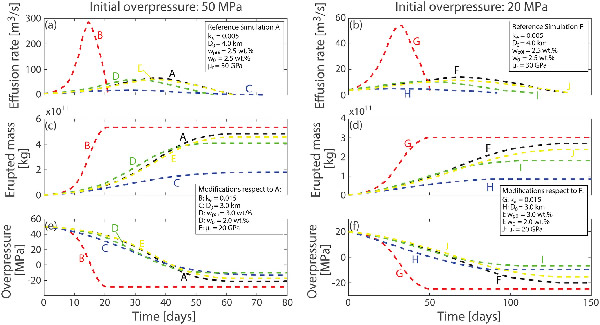Evolution of Conduit Geometry and Eruptive Parameters During Effusive Events

Aravena A., R. Cioni, M. de’ Michieli Vitturi, M. Pistolesi, M. Ripepe, A. Neri (2018).
Geophysical research Letters, 45/15, 7471-7480, https://doi.org/10.1029/2018GL077806.
Abstract
The dynamics of effusive events is controlled by the interplay between conduit geometry and source conditions. Dyke‐like geometries have been traditionally assumed for describing conduits during effusive eruptions, but their depth‐dependent and temporal modifications are largely unknown. We present a novel model which describes the evolution of conduit geometry during effusive eruptions by using a quasi steady state approach based on a 1‐D conduit model and appropriate criteria for describing fluid shear stress and elastic deformation. This approach provides time‐dependent trends for effusion rate, conduit geometry, exit velocity, and gas flow. Fluid shear stress leads to upward widening conduits, whereas elastic deformation becomes relevant only during final phases of effusive eruptions. Simulations can reproduce different trends of effusion rate, showing the effect of magma source conditions and country rock properties on the eruptive dynamics. This model can be potentially applied for data inversion in order to study specific case studies.


Devi effettuare l'accesso per postare un commento.